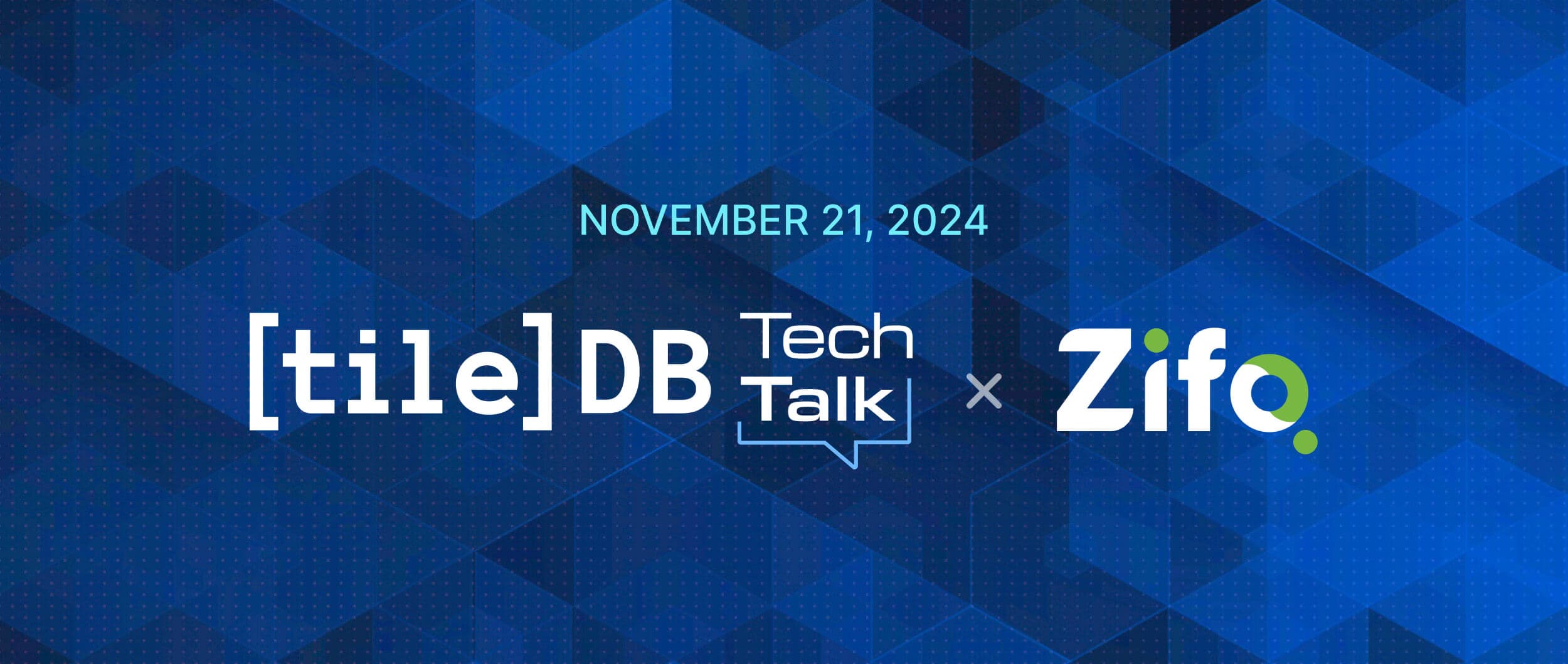Table Of Contents:
The Multimodal Data Revolution
Challenges with Multimodal Data
The TileDB Ecosystem
Use Case Spotlight: Enabling Innovation in Drug Discovery at Takeda
If you couldn’t join us live, you can watch the full webinar recording here to catch all the insights from our session.
In our latest webinar, we explored the critical challenges and transformative solutions for managing multimodal data in the life sciences. We focused on how TileDB, in collaboration with Zifo, is enabling Takeda, a large pharmaceutical company to build an R&D data platform to accelerate drug discovery, and one that follows FAIR guiding principles of data being Findable, Accessible, Interoperable, and Reusable. Here’s a recap of the key insights and takeaways from the session.
The Multimodal Data Revolution
We're in the midst of a data revolution in the life sciences. Omics technologies are generating data at an unprecedented scale, offering a deeper understanding of biological systems than ever before. But this explosion of data also presents challenges. We need to effectively manage, analyze, and interpret this complex information to unlock its full potential.
Challenges with Multimodal Data
Multimodal data poses challenges that data science and computational teams face routinely at biopharma companies:
Data variety
: Multimodal data encompasses a wide range of data types, each with its own unique format and structure.
Data integration
: Bringing together diverse data sources and resolving inconsistencies can be a major hurdle.
Data management
: The sheer volume and variety of data can be overwhelming, requiring efficient storage and organization.
Data analysis
: Extracting meaningful insights from this complex mix requires specialized analytical techniques and computational tools.
Computational demands
: Analyzing multimodal data often necessitates significant computing power and specialized infrastructure.
The TileDB Ecosystem
At TileDB, we’re addressing these challenges head-on. Our platform is designed to simplify the management and analysis of multimodal data andis built on three core pillars:
Data
: In addition to being able to store routine row-column tabular data, TileDB can store all types of complex semi-structured and unstructured data natively in an array database, from genomics and transcriptomics to biomedical imaging and beyond. This key step drastically simplifies and speeds downstream analyses, and reduces costs of data engineering.
Compute
: We provide the compute power you need to analyze this data at scale, with serverless, elastic distributed compute infrastructure, data pipelines and cloud optimization.
Governance
: TileDB includes robust features for data sharing, authentication, access control, and cost management. Our trusted research environment equips teams to collaborate securely in one place, while maintaining access controls, logging and adhering to FAIR principles.
Use Case Spotlight: Enabling Innovation in Drug Discovery at Takeda
At Takeda, in collaboration with Zifo, TileDB powers a platform that integrates clinical data, genomic data, and protein structures to visualize de-identified patient-specific amino acid changes in 3D. This platform allows researchers to:
Identify potential druggable regions on proteins.
Understand the impact of genetic variants in real-time.
Reduce analysis times while improving scalability and compliance.
"The product is very unique: it simultaneously joins patient-level clinical data, genomics data and publicly available data,” said Marcin von Grotthus, Director of Data Integration & Analytics at Takeda. “We have the opportunity for the first time to see whether amino acid changes that co-localize in the 3-D space of proteins correspond to patient phenotypes, which not only could help us to better understand the mechanisms of action, but also point to new druggable regions of proteins that could be used for future drug discovery.”
This innovative solution is now paving the way for expanding to single-cell and spatial transcriptomics data.
Looking Ahead
Managing multimodal data is no longer a luxury—it's a necessity for driving life sciences innovation. We're excited about the future of multimodal data and the role TileDB will play in unlocking its potential. We believe that by simplifying the complexities of this data, we can empower researchers to make faster breakthroughs and ultimately improve patient outcomes. With its powerful ecosystem for data integration, analysis, and collaboration, TileDB provides a scalable solution tailored to the complexities of scientific data and drive competitive advantage.
Catch the Replay Now
Want to see the design and architectural considerations for the data platform at Takeda? Watch the webinar on-demand.
Meet the authors
Devika Garg
Director of product marketing

